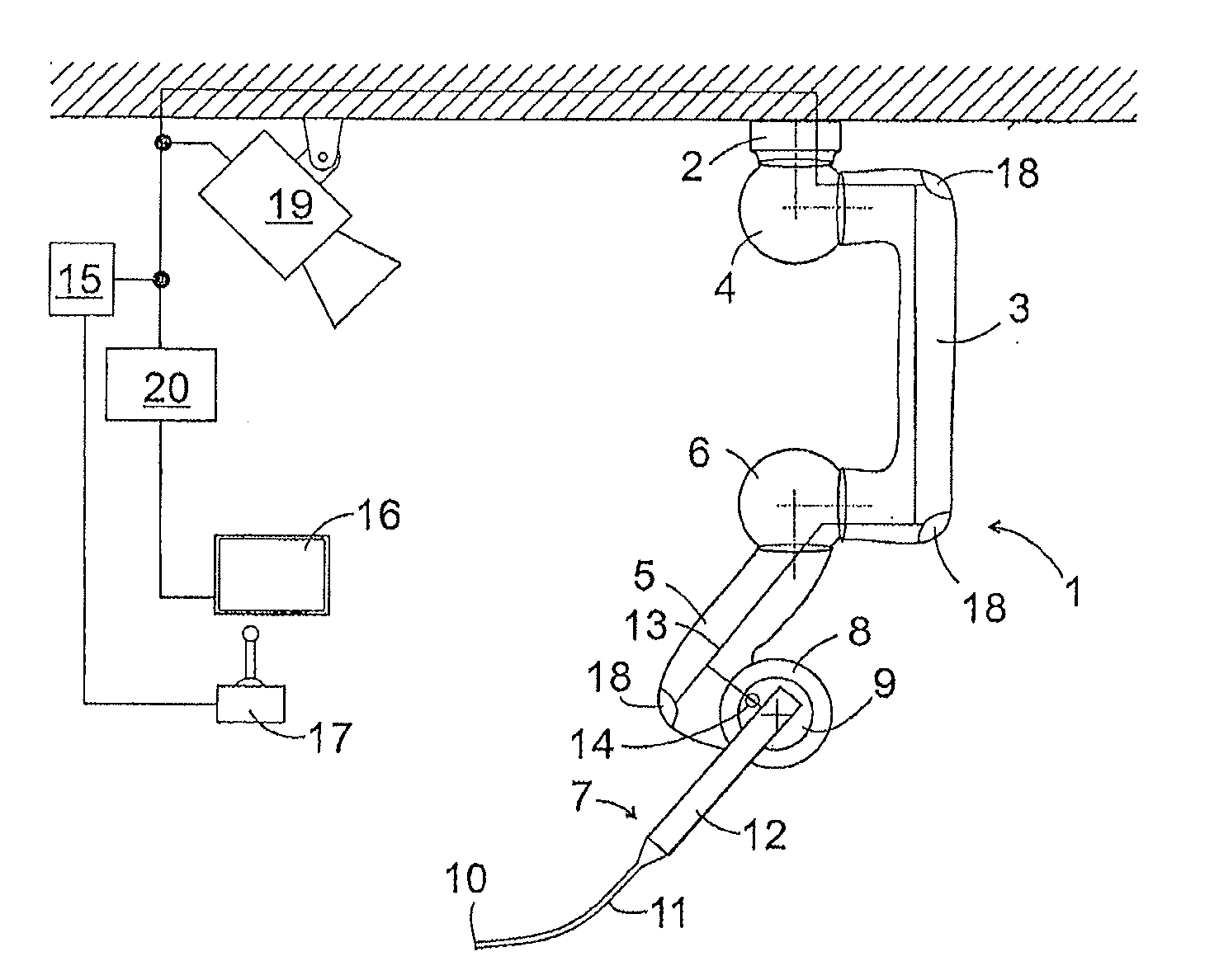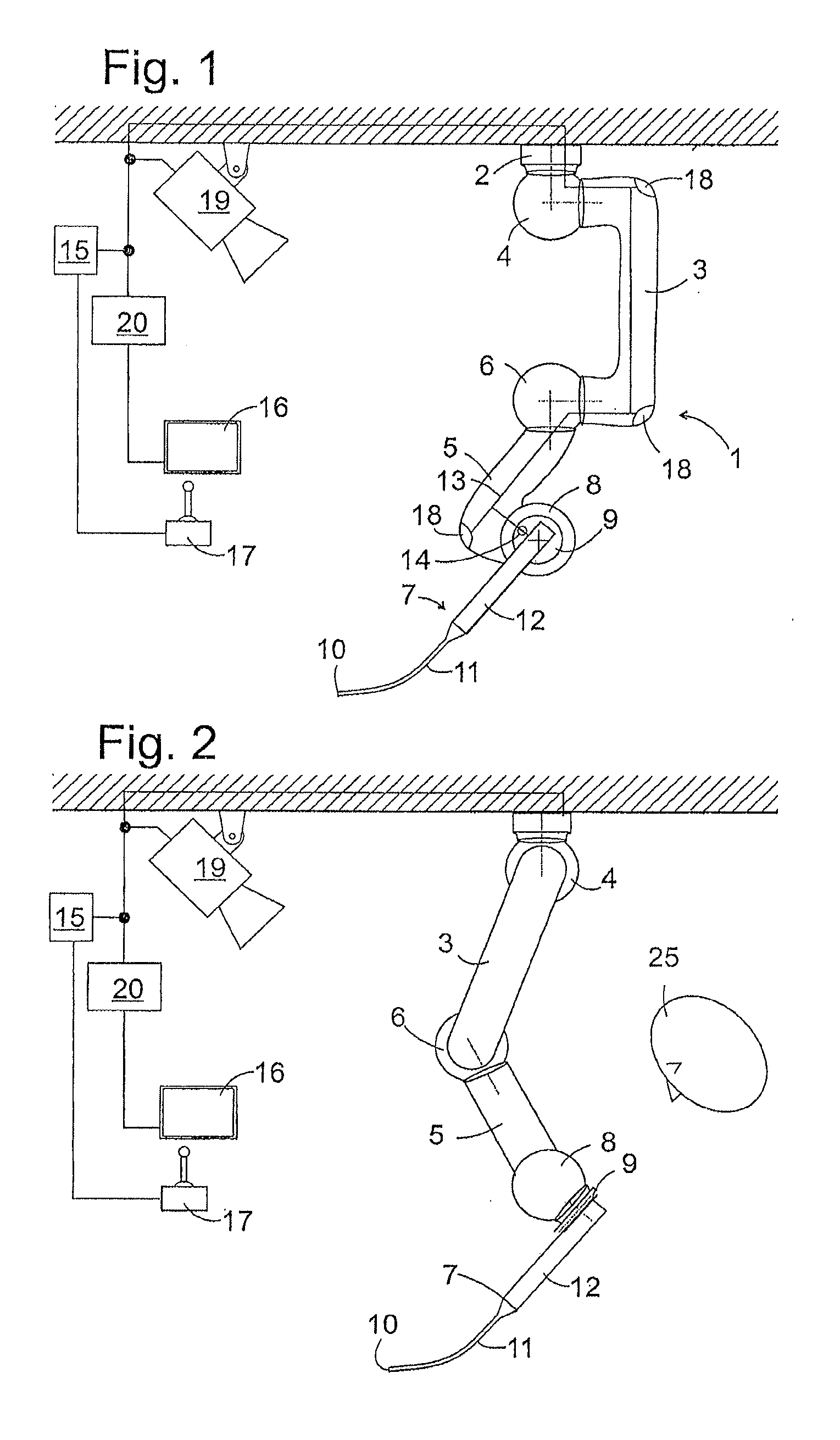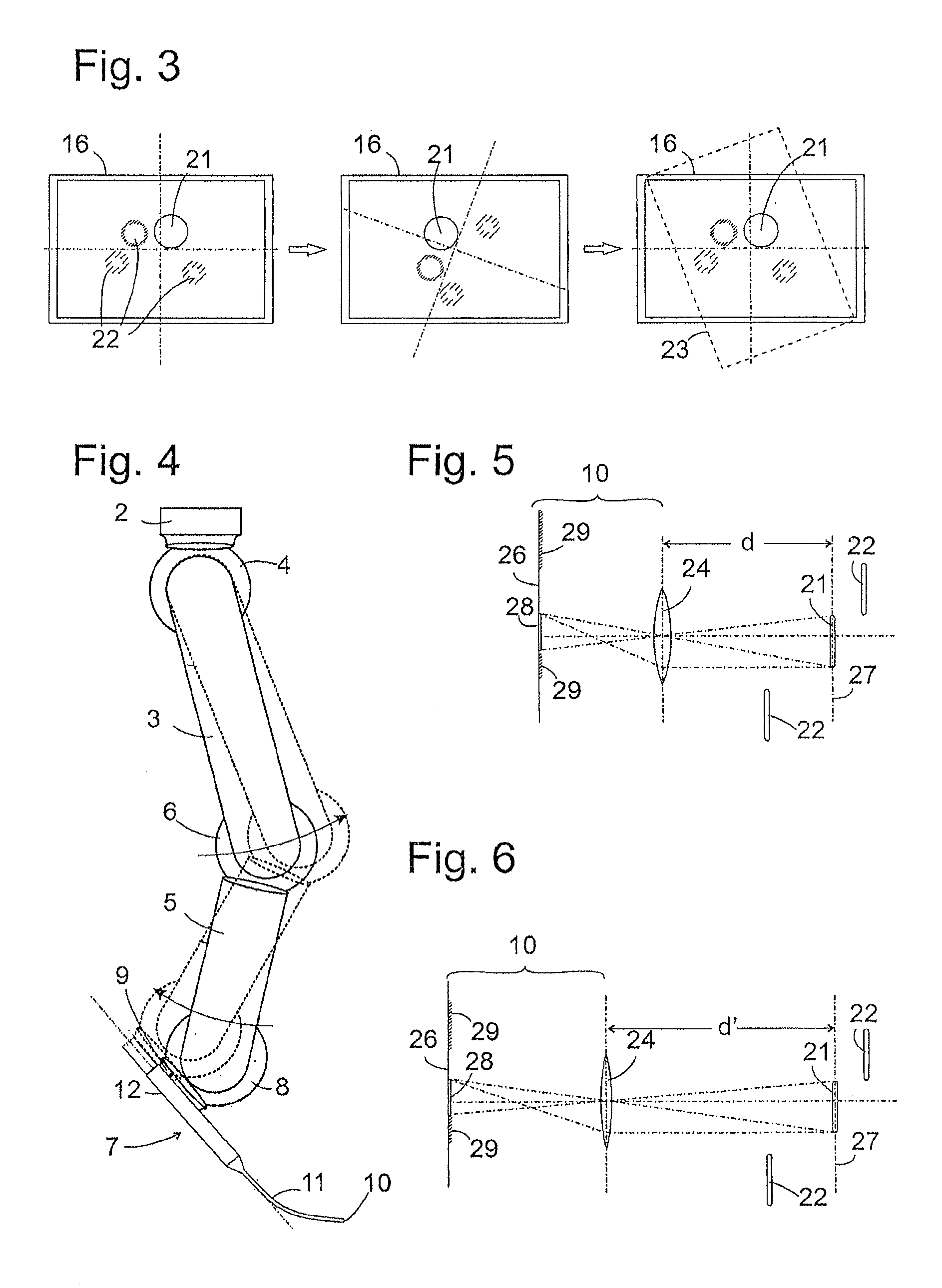Robotic system
a robot and robot technology, applied in the field of robot systems, can solve the problems of inability to protect the robot designed for use in the operating theatre, the inability to protect and the inability to prevent collisions between the robot and the personnel with absolute certainty, so as to achieve the effect of any risk of injury
- Summary
- Abstract
- Description
- Claims
- Application Information
AI Technical Summary
Benefits of technology
Problems solved by technology
Method used
Image
Examples
Embodiment Construction
[0035]FIG. 1 shows, in diagrammatic form, a robotic system according to an embodiment of the present invention. The system comprises a robotic arm 1 with a base 2 mounted in fixed position, in this case for example on the ceiling of an operating room, a first arm section 3, which is connected with the base via a first articulated module 4, a second arm section 5 which is connected with the first arm section 3 via a second articulated module 6, and an endoscope 7 which is detachably attached to a holder 9 connected with the second arm section 5 via the articulated module 8.
[0036]The articulated modules 4, 6, 8 are in this case designed as two-axis joints with two shafts arranged orthogonally in relation to one another which are in each case anchored non-rotatingly to an adjacent component of the robotic arm, i.e. the base 2 and the arm section 3 in the case of the module 4, the arm sections 3, 5 in the case of the module 6 and the arm section 5 and the holder 9 in the case of the mod...
PUM
 Login to View More
Login to View More Abstract
Description
Claims
Application Information
 Login to View More
Login to View More - R&D
- Intellectual Property
- Life Sciences
- Materials
- Tech Scout
- Unparalleled Data Quality
- Higher Quality Content
- 60% Fewer Hallucinations
Browse by: Latest US Patents, China's latest patents, Technical Efficacy Thesaurus, Application Domain, Technology Topic, Popular Technical Reports.
© 2025 PatSnap. All rights reserved.Legal|Privacy policy|Modern Slavery Act Transparency Statement|Sitemap|About US| Contact US: help@patsnap.com



